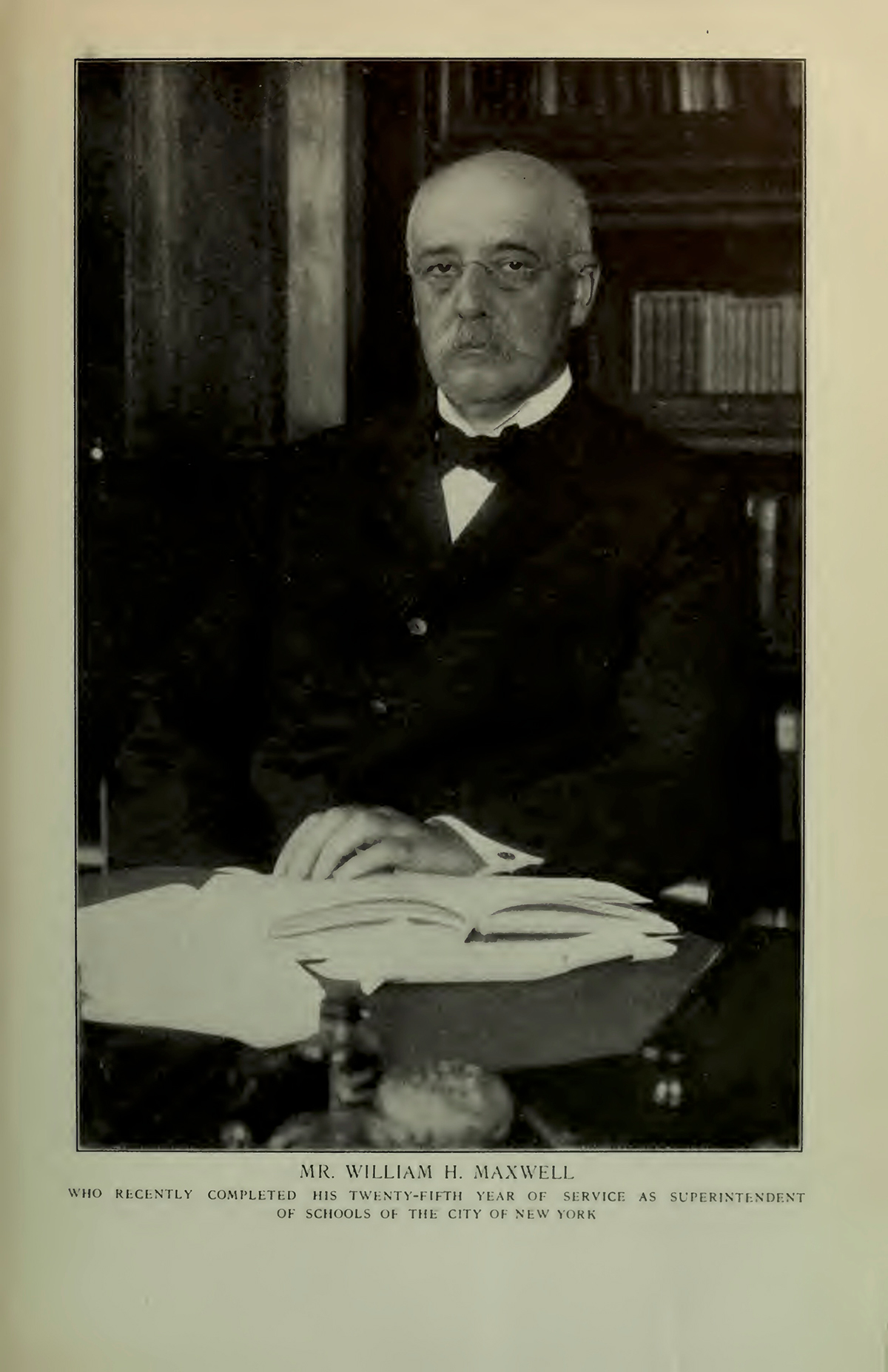William Maxwell

Date: December 1912
Caption: A formal portrait of William Maxwell, the first superintendent of the consolidated New York City School system.

Who should have made decisions about what happened to the hundreds of thousands of children in New York City’s schools? Increasingly in the 1880s, 1890s, and in the first decades of the 1900s, social reformers celebrated the idea that experts should be the ones to make key decisions. These social reformers - primarily white people from middle-class and wealthy backgrounds - saw many problems in the city around them. They were concerned about crime, public health, food safety, and children’s lives, among other areas. And they felt confident that they had the knowledge and skills to address these problems effectively, rather than the many thousands of working-class and poor New Yorkers, many of them immigrants, who made up the majority of the city’s population.1
These reformers were successful in pushing New York City to adopt a centralized school governance system that removed power from local school boards and gave more power to experts like William Maxwell.
William H. Maxwell was an education expert in the New York City school system. Maxwell was a white Protestant immigrant himself, who completed college and graduate school in Ireland before coming to the US. Maxwell became recognized as a national expert in part by publishing books that sought to help education leaders do their work more effectively. Although knowledge about education could come from a lot of places — through people’s life and work experience, for example — Maxwell was an example of new and powerful education leaders who claimed scientific expertise about the best, by which they often meant the most efficient, ways to run schools.
-
David B. Tyack, The One Best System: A History of American Urban Education (Cambridge, MA: Harvard University Press, 1974), and Diane Ravitch, The Great School Wars: A History of the New York Public Schools (Baltimore: Basic Books, 1974). ↩︎
Categories: K-12 organizing
Tags: school administration, white people, photography, imagery, and visual representation, newspapers and the media
This item is part of "From the “Masses” to “Experts”" in "Who Governs Schools?"
Item Details
Date: December 1912
Source: The World’s Work, Vol. 25, No. 2
Copyright: Public domain
How to cite: “William Maxwell,” in New York City Civil Rights History Project, Accessed: [Month Day, Year], https://nyccivilrightshistory.org/gallery/william-maxwell.
Questions to Consider
- What do you see in this portrait? What impression of Maxwell do you think this photograph wants to communicate? How does this portrait compare to portraits of other people that you have seen, on this site or elsewhere, including Elizabeth Cisco and Two Public School Teachers?
- How did William Maxwell’s background and experience relate to common expectations for a civic or government leader in the 1880s, 1890s, and 1900s? Who was excluded by these expectations?
- Who are the education leaders in your community today? How do you see them depicted in images like photographs or video?
References
How to Print this Page
- Press Ctrl + P or Cmd + P to open the print dialogue window.
- Under settings, choose "display headers and footers" if you want to print page numbers and the web address.
- Embedded PDF files will not print as part of the page. For best printing results, download the PDF and print from Adobe Reader or Preview.
